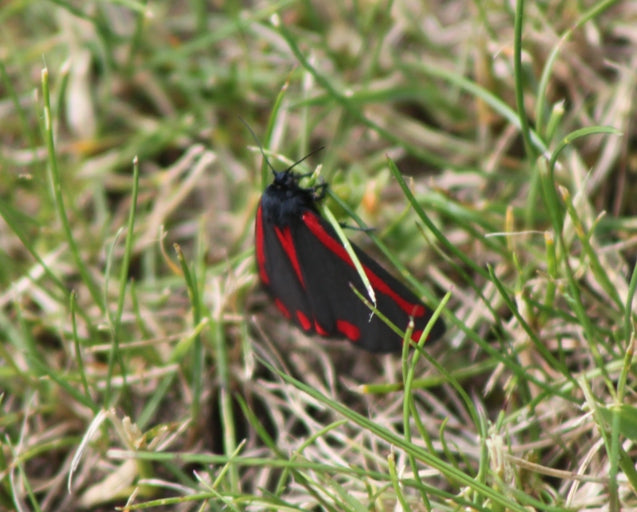
Butterflies: looking after your garden's most beautiful visitors
I just heard about a fabulous new campaign called Plant Pots for Pollinators: a lovely initiative to get both parents and children alike thinking about some of your garden’s most important visitors.
Plant Pots for Pollinators is campaign is backed by the Butterfly Conservation charity and celebrity gardener Alan Titchmarsh. He was explaining only a few days ago why it is so important to save our butterflies and moths, and simple ways that you and your family can help. This cinnabar moth appeared in our own garden a few days ago:

Quite apart from their astonishing beauty, butterflies and moths are vital for the environment. Areas with lots of butterflies and moths also have many other insects: these are vital for pollinating plants, and provide food for many other creatures.
Sadly, three-quarters of Britain’s butterfly species are in decline, and over 60 moths became extinct last century. Most of this is due to climate change and destruction of their habitats. The loss of these creatures is alarming: the state of butterfly and moth populations is a sensitive indicator of the overall health of the environment. If butterflies are struggling, so may be everything else.
Thankfully, butterfly and moth populations can bounce back to health, if given the right conditions. That’s where you come in! Alan Titchmarsh says that “one carefully planted, well-positioned pot or container can make a huge difference to butterflies, moths, bees and pollinating insects that need nectar to fuel their work”. With a bit of planning, you and your children can have fun creating a rich habitat for butterflies and moths, no matter how big your garden.
There are so many plants to choose from: cosmos, cranesbill, catmint, lamb’s ears, wild marjoram, to name only a few! You can learn more about growing (and recognising!) butterfly-attracting plants by visiting the Plots for Pollinators campaign, and by downloading their free planting guide. For a bit of extra colour, why not plant them up in some of our Colour Critter Planters, with butterfly mix wildflowers or Seedballs.
To read more tips for making your garden extra friendly for butterflies and moths, why not take a look at the Butterfly Conservation website, which has a whole lot of advice and information about why we should look after butterflies, how to attract them to your garden, and other ways of conserving these fascinating creatures.






Leave a comment